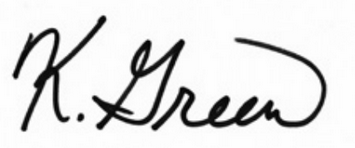Some investors like to watch things like interest rates and housing market trends for clues about the economy. I like to watch a little bit of everything. And that includes the “RV Index.”
Although not a conventional index by any stretch of the imagination, tracking RV sales can be a useful economic indicator. They are not only a discretionary purchase, but a fairly large one at that. A towable RV can easily set you back $20K‒$100K, while a motorhome can cost several hundred thousand.
RVs gained popularity during the COVID years—2020, 2021, and 2022. But their appeal was in steep decline by 2023. In February 2023, RV shipments were down over 50% compared to 2022. It didn’t help that the 2022 sales numbers set record highs.
But 2024 is looking a little different.
Both Winnebago and Thor have seen shipments climb 15% over last year. The RV Industry Association (RVIA) projects that RV wholesale shipments will continue to climb through the end of the year and into 2025.
I’ll admit I’m a bit partial to following RV trends. I lived in a 29-foot RV from 2019‒2021. It was one of my favorite living situations and on my list to do again.
But the RV Index is not the only unusual barometer that you can follow.
What the Local Economy Can Tell Us
Another travel-related indicator I’ve used in the past few years is the TSA checkpoint numbers. It’s easy to find on the TSA website and tells you the number of people going through TSA checkpoints on a given day.
The numbers tanked in 2020 during the COVID lockdowns. Since then, we’ve seen those numbers recover and stabilize at pre-COVID levels. We’re now seeing growth on top of that recovery.
For example, last Thursday, the TSA handled 2,922,961 travelers. That was 564,000 more than 2023 and 217,000 more than 2019. These numbers will not grow unless consumers have the extra income for these flights.
Outside of travel, analysts and economists also follow what’s happening in local economies. I’ve seen analysts look at boat sales, the number of people hanging out in bars, and even trends in the tattoo industry as barometers of the overall economy.
At the end of the day, these somewhat unorthodox measures of the economy actually make sense. The reason is that all of them are consumer discretionary goods. People will only spend their money on non-essential stuff if they have the extra cash, or if they are confident they will have the extra cash in the future. And if it’s happening on a local level, it’s probably happening in other cities across the country.
Many of the companies that we hold in the Yield Shark portfolio—especially the Bedrock section—are considered staples. This includes consumer staples as well as things that are staples to the economy such as utilities, oil and gas, and plastics recycling.
That doesn’t mean we can’t find some great dividend deals in the consumer discretionary sector—which is another reason I keep an eye on these more unusual gauges of the market.
Will Consumer Discretionary Companies Hit Their Post-COVID Normal in 2025?
After the initial shock of lockdowns in 2020, consumer discretionary businesses saw demand increase through the end of 2021. People bought everything from TVs and other electronics to bicycles and other sporting goods. Forced to spend more time in their homes, people noticed neglected home improvements and replaced furniture and appliances that might have lasted a few more years.
The result was a disruption of normal replacement cycles. Under normal conditions, everyone would not replace these things all at once.
For businesses, a typical cycle meant a consistent stream of consumers that are replacing or updating items year after year. After the buying binge, we saw consumer discretionary companies start to struggle in 2022 as consumers returned to their “normal life” and spending patterns.
Higher inflation and higher interest rates didn’t help, either. Consumers have been feeling the squeeze on their pocketbooks and financing costs not seen in over a decade.
Last year, many consumer discretionary companies cut their dividends. This included Big Lots Inc. (BIG), Intel Corp. (INTC), VF Corp. (VFC), and Newell Brands (NWL). If you’re not familiar with the last two, VFC is the parent company of Vans, Jansport, and North Face, just to name a few. And Newell Brands is the parent company of many household brands including Yankee Candle, Sharpie, Rubbermaid, and Crock Pot.
Don’t get me wrong, I’ve been looking for opportunities in the discretionary space. Last November, we bought shares of Travel+Leisure Co. (TNL) that we sold in February for a quick 28% gain. Short hold times are not our usual plan. But when a trade works fast, we’ll lock in those gains and move on.
If we get the expected interest rate cut in September, I think we’ll see that trickle through to consumer spending by the first quarter of 2025. If that happens, the sweet spot to buy select consumer discretionary companies at the best price is now through the end of the year.
So, if you don’t have a watchlist of consumer discretionary companies, get on that now. Make sure you know your yield targets and be ready to act if we see these unusual indicators turn around and see continued expectations of an interest rate cut.
For more income, now and in the future,





